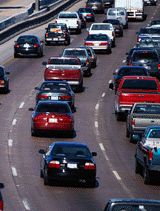
Auto insurance is an agreement between an insured person or group and an insurance company. The insured person or group pays premiums to the insurance company. In return, the company promises to pay compensation in the event of an accident or loss. There are several types of auto insurance. Some are required by law for all drivers while others are optional. Insurance policies are very specific about which damages are covered and to what extent they will compensate the policy holder.
Function
The most basic function of auto insurance is to cover damages to your vehicle when you are in an accident. This type of auto insurance is called collision coverage. Auto collision insurance is not required by law but if your vehicle was purchased with a loan or you lease your vehicle, the lien holder usually requires it. Auto collision insurance always has a coverage limit. Most insurance companies start individual policy holders at 100,000 dollars. This amount can be raised or lowered at the policy holder's request. There is usually a deductible on a collision policy. This is the amount that the policy holder must pay before insurance coverage applies. The standard deductible is 500 dollars but can also be raised or lowered at the policy holder's request.
Features
Another feature of auto insurance is comprehensive coverage. It covers damage or loss of your vehicle when something happens to it when you are not driving. This includes having your vehicle stolen, vandalized or damaged by weather. Like collision coverage, comprehensive insurance is not required by law. However, a lien holder may require it if you have an auto loan or lease the vehicle. Auto comprehensive insurance comes with a coverage limit and a deductible. Standard amounts are a 100,000 dollar limit and a 500 dollar deductible. Policy holders can raise or lower these amounts.
Warning
One type of auto insurance is required by law for all drivers in most U.S. states--liability coverage. It covers damages inflicted by the policy holder on another party. The bodily injury aspect of auto liability coverage pays for medical bills and lost wages if you hurt someone with your vehicle. The property damage aspect of auto liability coverage pays to repair or replace objects damaged by the policy holder. Auto liability coverage also pays legal bills and settlements if you are sued. It has a coverage limit but no deductible.
Prevention/Solution
Auto insurance policies also provide coverage protecting policy holders from drivers who are not adequately insured. Some states require personal injury protection which covers your medical bills regardless of who is responsible for the accident. Uninsured motorist insurance repairs your vehicle if it is damaged by someone without liability insurance. Under insured motorist insurance fixes your vehicle if the driver who damaged it does not have enough liability insurance to cover all the repairs.
Considerations
Auto insurance rates vary depending on the coverages requested and the people being insured. Coverage limits and deductibles can be adjusted on collision and comprehensive policies. The higher the coverage amount and the lower the deductible, the more that is charged for auto insurance premiums. Rates are also adjusted based on a driver's age, gender, driving history and the vehicles driven.














No comments:
Post a Comment